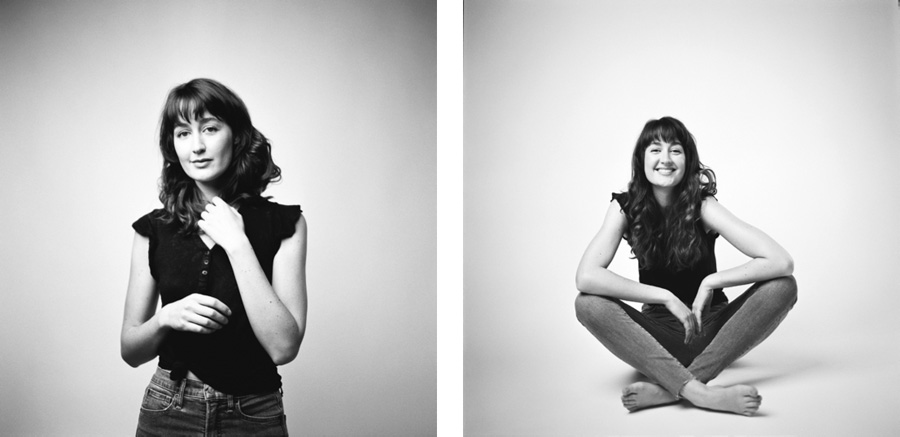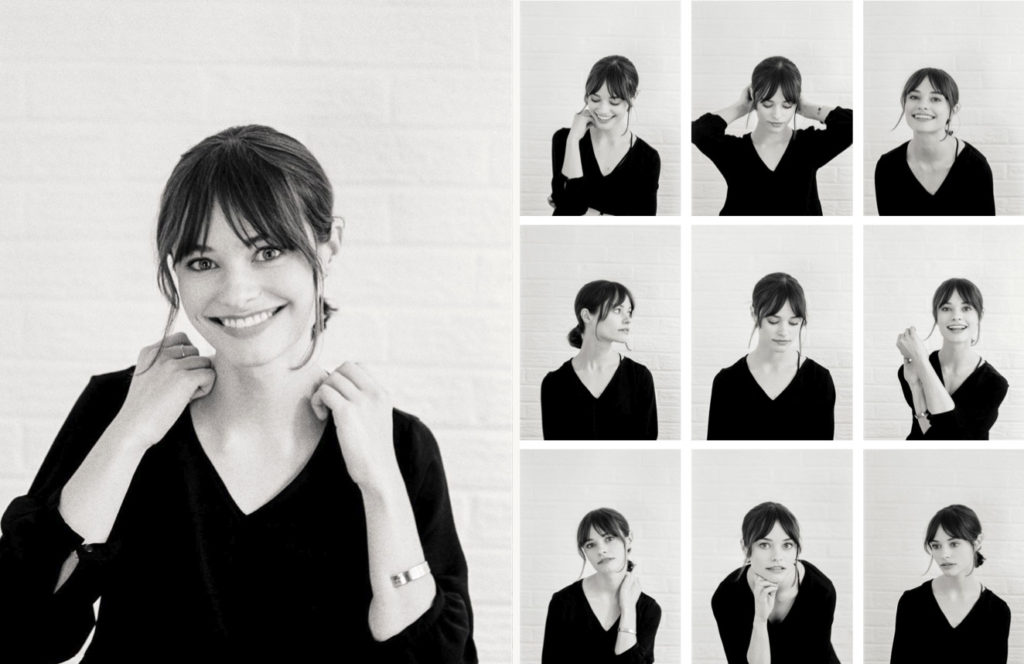VOTE DAILY FOR YOUR FAVORITE 2024 IMAGES!
learn more >>>
VOTING IS GOING ON NOW!
The
END OF THE YEAR AWARDS 2024
Expressive Portraiture
October 11, 2022

I shot my first studio portrait sequence on a single roll of 35mm Kodak Tri-X film, guiding my subject through very subtle changes in expression and posture between each press of the shutter. I assembled the sequence into a grid and felt immediately connected to the end result but, while fond of the images, I didn’t have easy access to a studio space so the idea fell to the back burner. It wasn’t until I settled into a more permanent studio space and came across an old portrait sequence of Marilyn Monroe that I fell in love with what I’ve begun to call “Expression Sequences”. I love the process just as much as the end result.
The idea was simple – people are complex. The execution is where the challenge lies and where I find the greatest meaning in my studio portrait work. People have a wide range of emotions, and in a social media driven world, so often a portrait becomes the same polished version of ourselves that we continually present to the world. I began to strip down the photographic process, until all that seemed left was myself, the subject, and our connection. My process is consistent. I typically shoot portrait sequences against a white backdrop, in varying body positions, lit by a constant LED light and softbox. My medium of choice is film, but only because that is how I feel most connected to the process. I recommend using the gear that you are most comfortable with. I shoot largely on square format, because I feel less confined by the traditional rule-of-thirds driven framing and my eye is drawn instantly to the subject. There is no leading of the eye into the subject.


With the process stripped down to the bare, the subject’s emotions become isolated. I find myself more drawn to a feeling, rather than a detail in the portrait. Oftentimes these images are highly imperfect. I’m shooting film, handheld, slow shutter speed, and pressing the shutter the instant the expression speaks to me. More often than not the subject is moving slightly. I end up with a lot of out of focus images or motion blur, and I love every single one. So, how do you draw out emotions from a subject? How do you connect with a total stranger in such an intimate setting. I’ll tell you that it’s easier than you think. As someone who feels distant in a lot of social situations, these intimate connections with subjects in studio have been just as meaningful for me as the end result has been for them. The most important thing is to slow down and to care. Care about your subject’s story. Care about every word that they have to say.
Where do you start? I set my lighting and typically start with my subject on a stool or box to help them loosen up and get used to being photographed. I move them through a few poses, talking to them the entire time. The goal is to get the subject to express them- selves the way they want to in that given moment. Be observant. If the subject starts to smirk because of a thought, ask them what they are thinking. If the conversation is making the subject laugh, laugh along with them. Dive deeper into whatever direction the shoot is naturally progressing and always be ready to capture that moment when the expression feels natural. Oftentimes, the moments leading into an expression are those that feel the most genuine, so always be ready.
Conversation is so important in relaxing a subject and making them comfortable, but I also challenge you to make them a bit uncomfortable. I ask my subjects to close their eyes and think about a moment in their life they are fearful of. I ask them to think about something that makes them angry or a moment when they were so blissfully happy that they could hardly contain their smile. Not every prompt works. So, if the emotion isn’t there, just move on and keep the flow going. Even while conversing, I am always directing and making sure the subject isn’t in once position for too long. Changes can be subtle. I’ll direct the subject to stare down my camera, then use my hands to guide their eyes up to the light, then back across the opposite shoulder. These small changes help to keep their mind from approaching an introspective rest. The mind is engaged in conversation and always thinking about these subtle directional changes – keeping the mind from dwelling too hard on body posture or the emotions they are expressing. I have a few other tricks that I use to get beyond the forced expression to the natural. I try something new every time. Does their smile feel forced? Try just staring them down with the camera and not saying anything until they crack a smile from sheer awkwardness. Are the eyes not smiling with the same character as the mouth? Have the subject squeeze their eyes super tight. It moves the entire face in unison and draws out an even bigger smile.

Most importantly, just be sincere. Sincerity goes such a long way in establishing a connection that is going to be raw, vulnerable and beautiful. I value the personal connections I make through photography just as much as the images themselves. Once I began to fully embrace this value and speak openly and vulnerably about the importance of these connections to me personally, I noticed a great shift in the quality of my work. I also began to connect with my work more, and this deeper personal connection seems to have come back full circle and created more meaningful portraits. I consider myself a complex individual. I’m wildly happy and at times wildly sad, like most people if they’d break down their walls and speak from the heart. The goal is that the portrait sequence gives them an opportunity to express that depth and breadth of life and their character, and shows them the beauty in each of those emotions. The end product is a visual representation of their being. It’s an anti-headshot, of sorts. It’s unfiltered, imperfect, but think for a moment about how you’d want yourself to truly be represented in photographs. I’ve thought about it a lot, and I’d take an imperfect representation of my entire character over a slice of scripted perfection each and every time.
Brian D Smith
Brian D Smith is a portrait and wedding photographer based in Charleston South Carolina and Northern Michigan. His work focuses heavily on storytelling and highlighting the unique and beautiful qualities of his subjects. In his wedding and portrait work he loves soft, elegant and refined portraiture but, equally so, gritty imperfection. Brian’s work is not influenced by trends, but rather by what inspires him artistically and the qualities of his subjects that makes them and their story unique. His work could be described as inspired, romantic and fashionable, influenced by his desire to create something so deeply personal that it far transcends a profession.
briandsmithphotography.com
@briandsmithphotography